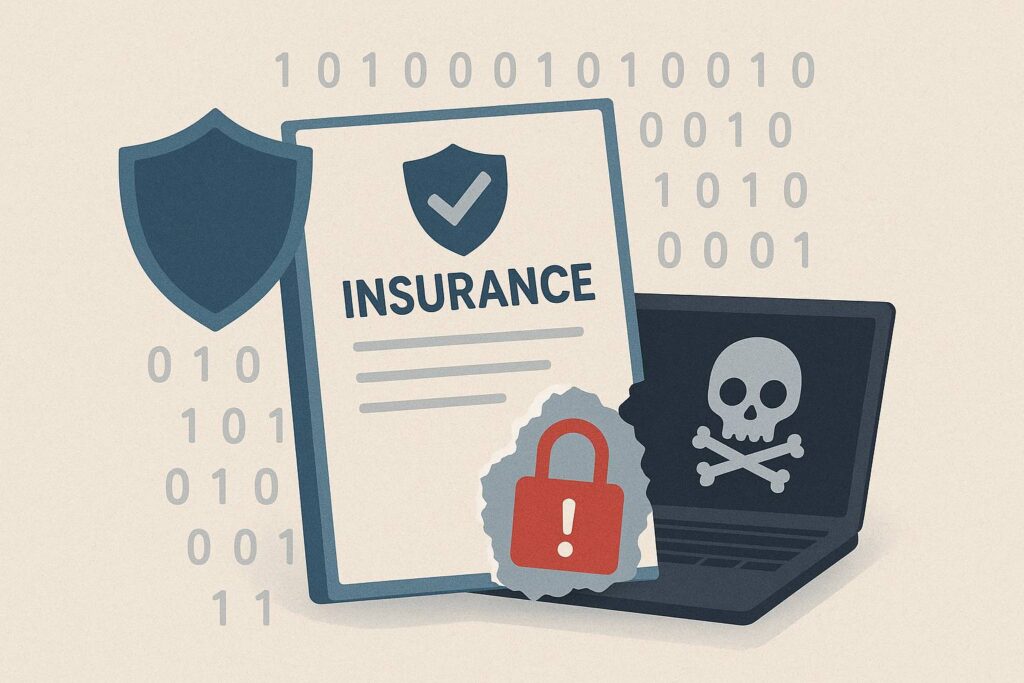The biotech industry is experiencing something of a boom. From personalized medicine to AI-assisted drug discovery, the life sciences sector is transforming healthcare and redefining innovation. However, beneath the surface of this rapid advancement lies a growing vulnerability that few outside the industry recognize or even understand. This has come to be known as biotech cybersecurity or cyberbiosecurity, and it has become something of a silent crisis, one that threatens not just intellectual property but the very building blocks of human identity.
While the mainstream media headlines tend to focus their attention mainly on financial or healthcare data breaches, biotech firms are quietly suffering from cyberattacks that usually go unreported due to NDAs, private funding structures, or reputational fears. In this article, we’ll explore what’s really going wrong inside the biotech cybersecurity space, why these failures are happening, how they’re being covered up, and, most importantly, what executives must do now to protect their data, infrastructure, and future. So let’s get to it!
Jump To:
Toggle
What Is Biotech Cybersecurity and Why It’s Different
Biotech cybersecurity refers to the protection of data, devices, networks, and intellectual property within the biotechnology and life sciences sectors. But it goes far beyond the scope of traditional IT. In biotech, cybersecurity encompasses:
Genomic and patient data that are used in clinical research, which, if exposed, could compromise patient privacy and enable profiling or even discrimination.
AI-driven bioinformatics tools that analyze genetic data or simulate drug interactions, which, if manipulated or corrupted, could lead to erroneous medical results or flawed drug formulations, either of which can be catastrophic.
IoT-enabled lab equipment and sequencing machines, which can be hacked to alter or steal data, disrupt operations, or introduce malicious software that can seriously affect critical processes.
Digital drug formulation pipelines, often stored in cloud environments or shared across partners, are ripe for intellectual property theft.
Unlike a tech startup or financial firm, biotech companies store and process highly sensitive biomedical research data, much of which is proprietary, regulated, and ethically complex. A breach doesn’t just threaten data integrity; it also could derail clinical trials, impact public health, or expose confidential DNA information.
Biotech Cybersecurity Failures Making Headlines (and the Ones That Aren’t)
Despite their value, biotech firms are often unprepared for cyber threats. This is primarily due to the fact that biotech companies, especially startups and mid-size firms, tend to prioritize speed to market, clinical breakthroughs, and investor milestones. Security generally isn’t considered a core business function until it’s too late.
In 2020, nation-state hackers targeted COVID-19 vaccine research at AstraZeneca, a major pharmaceutical company, and other pharma firms, according to a Reuters report. In another case, a mid-sized genomics startup suffered a ransomware attack that disrupted its entire DNA sequencing pipeline for weeks. Most people weren’t aware of it because the breach was never disclosed publicly.
As mentioned before, many of these events remain hidden due to private ownership, non-disclosure agreements, or fear of investor fallout. But the consequences of data breaches in biotech companies can be very severe and include the following:
Loss of competitive IP advantage: Stolen formulas or processes can be sold to rivals or counterfeiters or on the dark web.
Corrupted scientific results: Cyberattacks can compromise the integrity of research data, affecting the results and jeopardizing years of work.
Exposure of sensitive patient data: Biotech often handles genetic and personal health data, which, if leaked, can be used maliciously, like extortion.
Legal and regulatory violations: Noncompliance with HIPAA, GDPR, or other data protection laws can lead to fines and reputational damage.
The result? Insiders are well aware of this ongoing crisis, which the public rarely ever sees.

Why Hackers Are Targeting Biotech and Life Sciences Firms
So why is biotech in the crosshairs? Biotech and life sciences firms have become prime cyber targets for one simple reason: they’re rich in valuable data and are woefully underprotected. Unlike financial institutions or big tech companies, biotech firms usually don’t place cybersecurity as a priority, and as such lack strong security frameworks, even though they manage data that’s arguably even more valuable and sensitive. Let’s take a look at why biotech firms are under hackers’ radar.
Valuable Intellectual Property
Biotech firms produce novel vaccines, experimental drugs, gene therapies, and molecular compounds that are worth billions of dollars. Because of these high-stake assets, hackers, especially those backed by foreign governments, may try to steal IP to accelerate their own pharmaceutical programs. Also, competitors or criminal groups can sell or repurpose stolen research for profit.
In 2020, U.S. and U.K. intelligence agencies publicly stated that Russian-backed hackers attempted to steal COVID-19 vaccine research from biotech laboratories. This exemplifies the cybersecurity threats facing the biotechnology industry.
Highly Sensitive Genetic Data
Biotech firms do so much more than just hold health data; they typically store DNA sequences, genomic profiles, and personalized treatment algorithms. Genetic information is unique, permanent, and personal, and if stolen, it can be used for surveillance, insurance discrimination, and extortion. In many instances, this information can even be sold on the dark web.
Rapid Growth, Weak Infrastructure
Many biotech startups scale quickly and delay investing in secure systems. Cybersecurity just doesn’t seem to be a priority, with many labs and clinical systems running on outdated, unpatched software. That leaves them with patchy firewalls, outdated firmware, and poorly segmented networks.
Limited Oversight and Disclosure
Unlike public tech firms or banks, many biotech companies are privately held. They also face fewer cybersecurity compliance regulations, and have no obligation to report breaches unless they involve patient data
The Real Risks: It’s Not Just Data, It’s Identity and Innovation
Unlike passwords or financial data that usually change over time, genetic data is permanent. You can’t simply reset your DNA or other physical information about yourself. Data that is permanent makes it particularly dangerous if it falls into the wrong hands. Imagine:
Executives or family members having their DNA profiles leaked: This could lead to targeted surveillance or identity misuse.
Intellectual property theft: A single stolen gene-editing blueprint or antibody formula could cost a company hundreds of millions of dollars.
Bioethical dilemmas: If hackers are able to manipulate data, they could affect drug trials or public health recommendations, leading to long-term ethical fallout.
What is scary is that there is a growing black market for genetic data. The MIT Technology Review reports that this demand fuels hackers to increasingly consider DNA and other biotech information as their next target for exploitation.

Executive Responsibility: Why This Isn’t Just an IT Problem
Too often, cybersecurity is delegated to IT or operations. But in biotech, that approach is outdated and dangerous. Biotech firms face unique threats that require high-level input within the company. Senior executives must own the biotech cybersecurity strategy, particularly when handling intellectual property, investor capital, and regulated clinical data.
Here are a few ways in which key leadership often fails:
Lack of cybersecurity briefings in board meetings: Many executives are unaware of, or downplay, the real cyber risks that their companies face.
No defined protocol for securing R&D pipelines: From data collection to drug testing, every step can be a vulnerability if a proper security framework is lacking.
Poor cross-team communication: When research and IT teams operate in silos, cybersecurity blind spots will inevitably creep up.
Executives must be held accountable not just for operations but for the ethical, financial, and national security implications of failing to secure biotech systems. After all, they lead the company; the responsibility is theirs to ensure the intellectual and genome data is kept safe.
What Executives Can Do Today: A Strategic Action Plan
Executives and other senior managers sometimes underestimate or don’t fully understand the critical role they play in setting the tone for cybersecurity. In biotech, that tone must be proactive, precise, and embedded into the company’s culture. The following steps are designed to help leadership teams respond to threats and prevent them from becoming full-blown crises.
1. Conduct a Biotech-Specific Cyber Audit
It is important to identify high-risk assets, insecure endpoints, and third-party integrations. In addition, the company must prioritize protecting genomic data and proprietary research systems. In a biotech company, generic security assessments just won’t cut it. Biotech firms must perform a tailored audit that looks beyond financial systems and email servers. Instead, they should focus on:
Network segmentation for R&D environments: Biotech research systems must be isolated from other corporate or guest networks to prevent any lateral movement during a breach. Use VLANs, as they can isolate the network, firewall rules, and dedicated lab networks to keep R&D environments secure.
Implement access control policies for research data: Limit who gets to access sensitive data like genomic research and intellectual property. Also, enforce role-based access, MFA, and strong *offboarding protocols. Log all access and flag unusual activity.
Exposure of sequencing tools or lab software to external threats: Many lab devices connect to the internet for updates or remote access, making them vulnerable. Audit all networked instruments, disable default services, and keep firmware up to date.
Security posture of collaboration platforms used by researchers: Researchers often use shared cloud tools. Ensure platforms use encryption, control data sharing, restrict third-party integrations, and expire external access automatically.
*The formal steps a company takes to remove access and permissions from an employee, contractor, or partner who is leaving the organization, or finishing a project.
2. Classify and Isolate Sensitive Bio-Data
Not all data is equal. Biotech firms must treat DNA sequences, lab results, drug development, and clinical trial data as if they were national secrets. To ensure they remain secret, you should:
Store sensitive data on air-gapped or zero-trust systems
Encrypt all data at rest and in transit
Use multi-factor authentication for access to critical datasets
Regularly review and limit access based on roles
This approach ensures that if a breach occurs in general systems, critical biological data remains protected.
3. Enforce Vendor and Partner Compliance
Biotech firms don’t work in isolation; they usually collaborate with universities, CROs (contract research organizations), cloud platforms, and device manufacturers.
Require all partners to meet your minimum cybersecurity standards
Include security clauses in contracts and NDAs
Ask for documentation of SOC 2, ISO 27001, or NIST compliance
Conduct regular audits or penetration tests of shared systems
Require security certifications and audit trails from all suppliers, researchers, and cloud providers.
A vendor is only an asset when it doesn’t become your biggest liability.
4. Secure IoT Infrastructure in Labs
Biotech companies use a host of different devices and instruments, from smart freezers to DNA sequencers. Lab equipment is often connected to the Internet but rarely designed with security in mind. Ensure:
Disable unused ports and default admin credentials
Regularly patch firmware and monitor for unauthorized access
Use network segmentation to isolate IoT devices from corporate systems
Turn off remote access features unless absolutely necessary
Your state-of-the-art lab shouldn’t become a hacker’s backdoor into your data.
5. Foster Boardroom-Level Cyber Conversations
We touched on this earlier, but it’s important to take note of it again because it’s so essential. Executives must normalize cybersecurity discussions at the highest levels of decision-making. Make cybersecurity a regular item in strategy meetings, and use breach simulations or red team testing to drive awareness.
Schedule annual tabletop exercises simulating biotech breach scenarios
Incorporate cyber risk into mergers and acquisitions due diligence, as that needs strong planning and oversight.
Track cyber insurance coverage limits vs. actual data risk exposure
Include threat briefings in strategic planning meetings
Treat biotech cybersecurity with the same urgency as regulatory compliance or financial reporting—and your organization will be far more resilient.
6. Appoint a Biosecurity Liaison at the Board Level
Designate a senior executive to bridge cybersecurity, compliance, and R&D. They should report quarterly on digital bio-risk.
Conclusion
Biotech firms are building the future of healthcare; however, in many cases, they lack the necessary cybersecurity measures to protect some of our most important data.
The industry’s most valuable data is also its most vulnerable. And while breaches may not always make headlines, the damage they cause can be catastrophic, and in many cases, irreversible. If biotech companies don’t make the right pivot and ensure their data is safe, their future will continue to be untenable.
Key Takeaways
Biotech companies are high-value cyber targets due to their IP and genomic data.
Many attacks go unreported, but the consequences of those attacks include legal, financial, and ethical fallout.
Executives can no longer treat cybersecurity as a back-office function; they must see it as a vital part of their organization.
A strategic, biotech-specific approach is what is required for resilience and trust.
If you’re a CEO or senior executive of a biotech company, is your biotech cybersecurity strategy prepared for what’s coming? Share your thoughts or experiences in the comments below.







